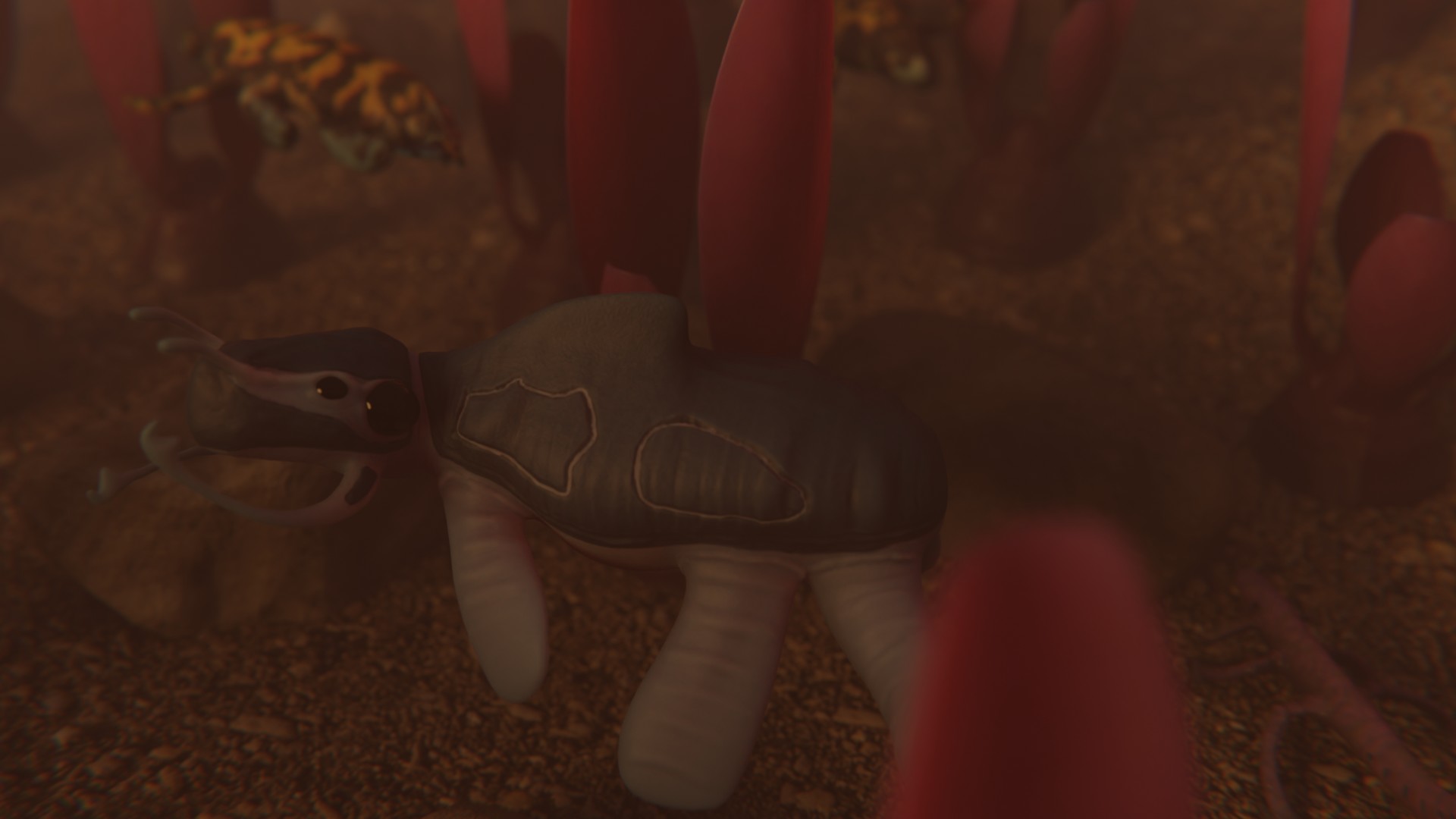Vesicapiscis
With the competition in the oceans growing larger and larger many species have moved into the freshwater biomes. Though the rivers and lakes of Yama are no less dangerous, direct competition for food is much more rare. Many of Yama’s lakes are now dominated by slow swimming yet armored schools of Vesicapiscis. Vesicapiscis are descendants of durospina who exploited the lack of free swimming competition and became free swimming themselves. Feeding on an almost exclusive diet of Lacustapete's leaves and stems, they are the gardeners of Yama keeping the retinalphytes from overpopulation and clogging waterways. Pictured here a Lacustapete is foraging near the shore of a lake. [Creature design by Saurusblooded & Kipzilla]
Basic Information
Anatomy
Vesicapiscis have a compact body that is covered in a thick keratinized dorsal shell which is also present on the cranium. A dorsal spine has formed partially for defense against predators but primarily to stabilize the Vesicapiscis’ swimming.
The cranium has extended to house larger eyes and antennae so that the Vesicapiscis can better identify members of it’s school and threats in the murkier water of lakes and swamps. The mouth has also extended creating a distinct upper and lower jaw. The upper jaw is part of the Karatinized dorsal shell and is covered in sharp ventral grooves used to masticate retinalphyte material as it moves down the mouth while the soft lower jaw will mash the retinalphyte material against the grooves to accelerate the process. This is to allow for easier digestion of the relatively nutritionally poor Lacustapete's leaves. As with the ancestral durospina the pair of claws on the lower lateral sides of the cranium are used for grasping food and deterring predators.
The ventral pseudopods have gone under the most change with the secondary pair going over the most extreme change. The limbs have fused to the ventral side of the body and have been converted into a bladder containing metabolic gasses to control buoyancy.
The first, third and fourth pairs of pseudopods have flattened into short circular fins that provide propulsion and stability while swimming. These limbs are still articulate though allowing the Vesicapiscis to “walk” along the bottom of lakes and rivers should the need arise.
Genetics and Reproduction
Vesicapiscis are true hermaphrodites, and a pair will usually dig a pair of holes in soft sediment with their hind limbs and lay their eggs one in each hole before fertilizing them and burying them.
Growth Rate & Stages
Vesicapiscis emerge from the eggs as miniature versions of the adults but lack the dorsal shell that is formed of dead keratinized cells. Their development is accelerated during this stage of their life and they will feed by means of filtering out sediment. During this time they will develop their shells and be able to join a school of Vesicapiscis. This process will take just under a local year after this their metabolism slows down as their diet changes to retinalphyte leaves.
When a Vesicapiscis reaches the age of 4 local years it will be large enough to breed.
Ecology and Habitats
Vesicapiscis are native to the swamps, lakes and rivers of Yama.
Dietary Needs and Habits
Vesicapiscis start life filtering sediment but will quickly shift to a purely retinalphyte diet once their shell is fully developed.
Additional Information
Social Structure
Vesicapiscis live in schools or on average 20-30 individuals. These schools are leaderless and are purely for protection from predators they will often divide and reform multiple times during a local year.











Comments